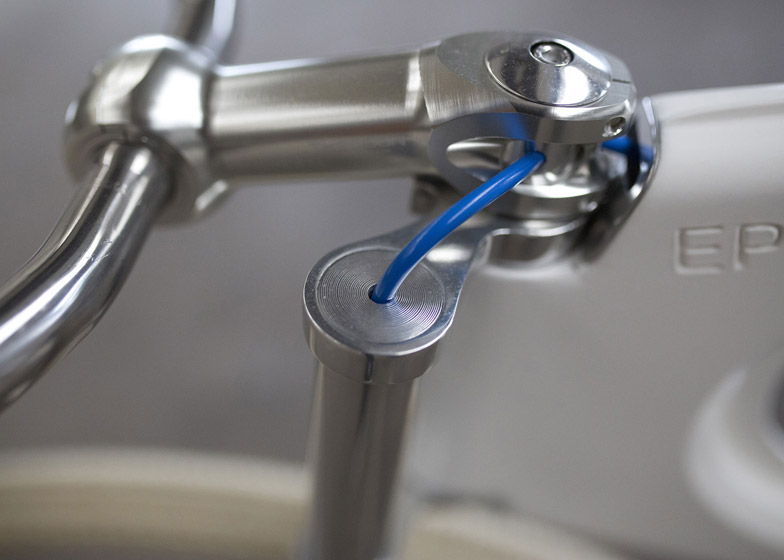Dutch Design Week 2014: the frame of this bicycle by Design Academy Eindhoven graduate Bob Schiller is made using automated processes borrowed from car manufacturing, which the designer hopes will allow production to return to the Netherlands (+ slideshow).
For his graduation project, Bob Schiller wanted to design a bicycle that could be both built and used in the Netherlands – a country with a rich cycling tradition and manufacturing history.
"Every single person in the Netherlands cycles – even our prime minister uses his bike to get to work," said Schiller. "Cycling is part of our culture and it has been for centuries. However, an affordable, contemporary Dutch bicycle disappeared from our streets."
Most mass-produced bicycles, which are labour-intensive to build, are now made in Asia as costs are cheaper than in Europe.
"I think that's a shame, with all of our experience we should be able to make the best bikes in the world," said Schiller. "It's not only about economical benefits but also about sentiment."
Schiller's solution is to automate the processes used to create the frames by borrowing techniques from the car industry, which has managed to retain production in several European countries.
The frame of the Epo Bicycle is formed by pressing two sheets of aluminium into shape then fusing them together using spot welding – a process that fuses metal with heat generated by an electric current.
Both the pressing and welding can be done by machines, therefore saving on the cost of labour and making the city bike affordable to produce in the Netherlands.
The deep aluminium section connects to the seat support in two places, doubling back on itself where it joins the handlebar pole. The welded edges are exaggerated to emphasise how it has been constructed.
"In the design of the frame I wanted to show this process," Schiller said. "That's why I chose the sharp lines and high edge that visually splits the frame in half."
The wheels are mounted to the side of the frame so the tires can be changed without taking the bike apart, while brake levers are integrated into the ends of the handlebars.
A prototype of the Epo Bicycle was displayed at the Design Academy Eindhoven graduate exhibition during Dutch Design Week, which concluded yesterday.
The concept design requires further calculations to assess the strength and stiffness of the frame before it is ready for production.
Schiller is currently looking for an investor to help fund the startup costs, and is also considering crowdfunding an option to raise the required finances.









